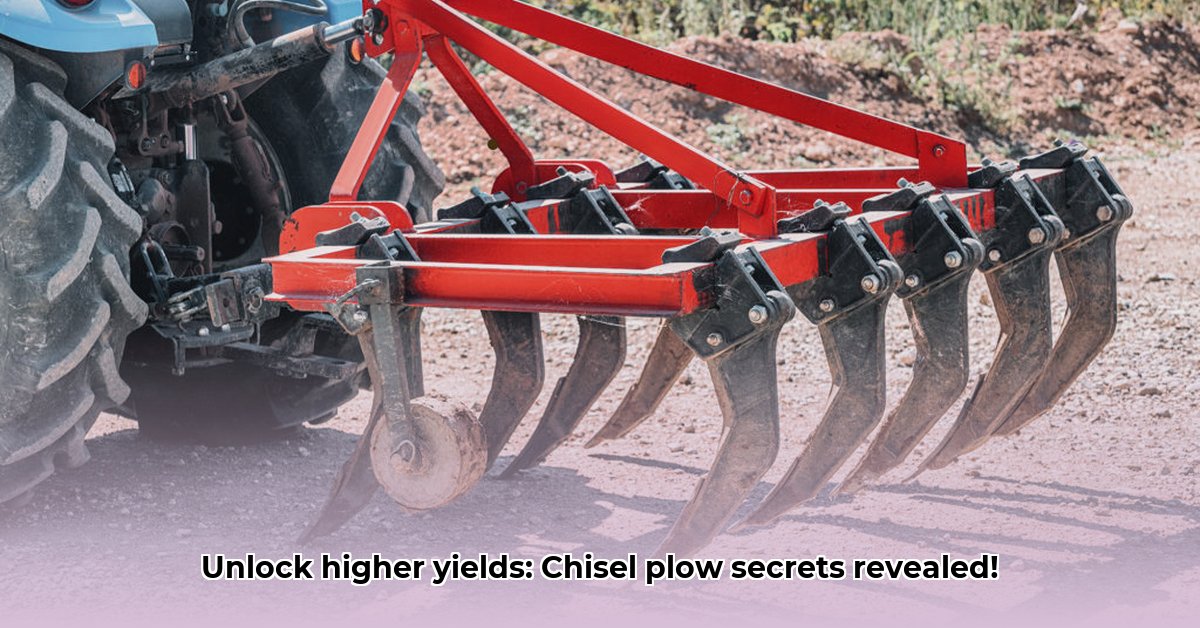
Understanding Chisel Plow Points: The Soil Aerators
Chisel plow points are the working parts of a chisel plow, designed to break up compacted soil without completely inverting it (unlike a moldboard plow). They aerate the soil, improving water infiltration and overall soil health. Several types exist, each suited to different soil conditions. Selecting the right type is crucial for efficient operation. A common misconception is that all chisel points are the same — the reality is a far more nuanced selection process ensures optimal functionality. For more information on soil preparation equipment, check out this helpful resource on rototillers.
Choosing the Right Chisel Plow Points: Matching the Tool to the Task
Selecting the ideal chisel plow points requires careful consideration of several factors. Soil type is paramount: heavy clay requires stronger, wider points than lighter sandy loams. Farming practices also influence the choice. No-till farmers prioritize minimal soil disturbance, opting for shallow-penetration points. Tractor compatibility is essential – a smaller tractor can't handle the workload of a larger one. Using oversized points can lead to damage or breakdowns. Choosing the wrong point can lead to decreased efficiency—a common mistake seen amongst novice farmers.
| Soil Type | Recommended Point Type | Considerations |
|---|---|---|
| Heavy Clay | Wide, heavy-duty points with robust shanks | Requires more tractor power; stronger materials are needed for the shanks. |
| Sandy Loam | Narrower, lighter points; possibly shallow-working design | Less power needed; minimizes soil disturbance; encourages beneficial microbes. |
| Rocky or Stony Soil | Points with replaceable tips made of hardened steel | Protects the main point from damage; extends lifespan and reduces costs. |
| Loose, Well-Drained Soil | Points with a slightly more aggressive profile (if aeration is a primary goal) | Provides deeper penetration to break up and aerate compacted layers. |
Installing and Maintaining Your Chisel Plow Points: A Little TLC Goes a Long Way
Installation is generally straightforward, but always refer to your plow's manual for specific instructions. Ensure proper alignment and use the correct bolts. Always inspect for damage before use. Regular maintenance is crucial. Regularly inspect your points for wear and tear. A dull or damaged point reduces effectiveness and stresses the plow, potentially causing more serious issues. Replace worn points promptly to avoid costly repairs and downtime. Neglecting maintenance can significantly reduce the lifespan of your chisel plow – a costly oversight.
Optimizing Chisel Plow Points for Sustainable Farming: A Healthier Planet, Healthier Profits
Proper chisel plow point use is fundamental to sustainable agriculture. Minimal soil disturbance protects soil structure, reducing erosion and improving water retention. It also enhances carbon sequestration, benefiting the environment and mitigating climate change. This contribution to carbon sequestration alone makes the use of chisel plows an environmentally responsible choice.
Troubleshooting: When Things Don't Go as Planned
Problems may arise despite careful planning. Excessive point wear might indicate incorrect point type, use in rocky soil, or improper usage. Inadequate penetration could be due to insufficient tractor power or an unsuitable point design. Careful diagnosis is essential. Excessive soil compaction might require subsoiling before using a chisel plow. Soil testing helps identify specific soil needs. Do you ever wonder how to best address compaction issues? The solution often starts with a detailed soil analysis.
"Regular soil testing is crucial for understanding your soil's needs and optimizing your chisel plow's performance," says Dr. Emily Carter, Soil Scientist at the University of California, Davis. "Ignoring these signals can hurt your yields and long-term soil health."
Remember, choosing the right chisel plow points is just the beginning. Proper installation, consistent maintenance, and understanding your soil are crucial for maximizing yields and contributing to a sustainable future. Failing to heed these points will lead to a reduction in overall efficiency.